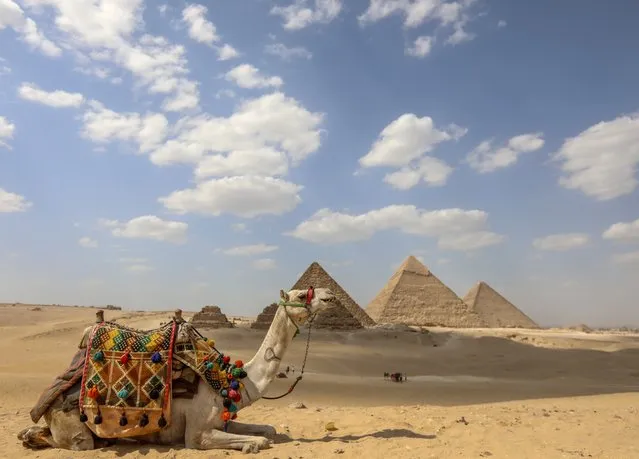
A view of the pyramids of Cheops, Khafre and Mikerinos is seen in Giza, Egypt on May 22, 2022. The pyramids, named after the Pharaohs of the period, are located in the same area as the tombs of the father, son and grandson, the largest being Keops (King Khufu), the middle pyramid Khafre (King Khafre) and the small pyramid Mikerinos (King Mnkaure). (Photo by Mohamed Abdel Hamid/Anadolu Agency via Getty Images)
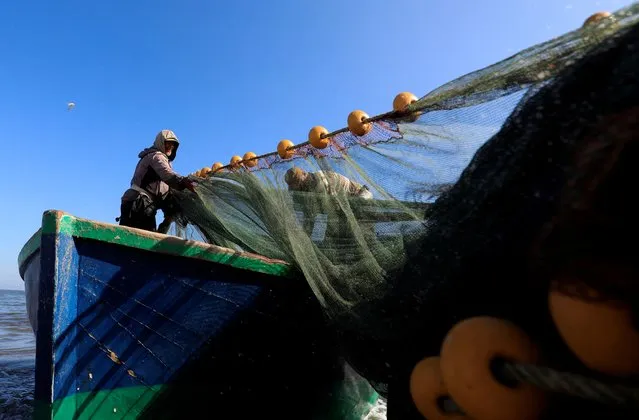
An Egyptian fisherman raises his nets without fish on a boat along a beach by the Red Sea shore in Port Said city, northeast of Cairo, Egypt on May 27, 2022. (Photo by Amr Abdallah Dalsh/Reuters)

Egyptian fans of Liverpool react while watching the UEFA Champions League final football match between Liverpool and Real Madrid at a caf in the capital Cairo on May 28, 2022. Real Madrid won 1-0. (Photo by Ahmed Hasan/AFP Photo)
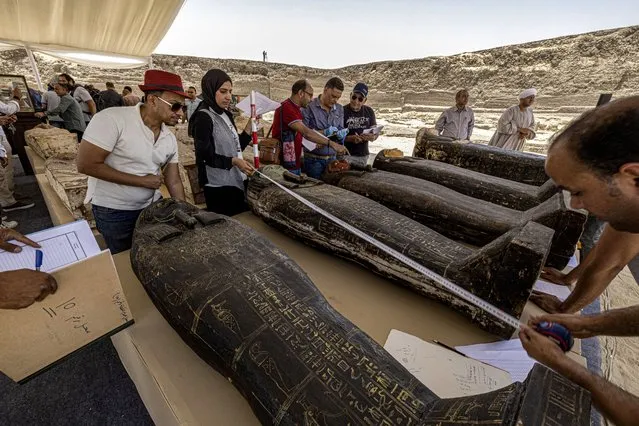
Archaeologists measure the length to register one of the sarcophaguses found in a cache dating to the Egyptian Late Period (around the fifth century BC), discovered by a mission headed by Egypt's Supreme Council of Antiquities, at the Bubastian cemetery at the Saqqara necropolis, southwest of Egypt's capital on May 30, 2022. - Egypt on May 30 unveiled a cache of 150 bronze statues depicting various gods and goddesses including “Bastet, Anubis, Osiris, Amunmeen, Isis, Nefertum and Hathor”, along with 250 sarcophagi at the Saqqara archaeological site south of Cairo, the latest in a series of discoveries in the area. (Photo by Khaled Desouki/AFP Photo)
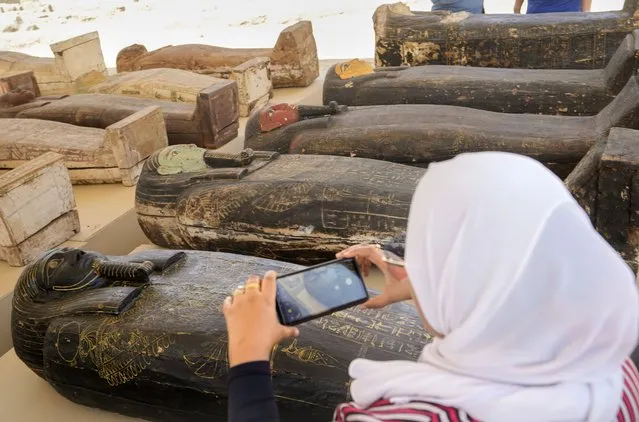
A reporter films painted coffins with well-preserved mummies inside, dating back to the Late Period of ancient Egypt around 500 B.C, displayed during a press conference at a makeshift exhibit at the feet of the Step Pyramid of Djoser in Saqqara, 24 kilometers (15 miles) southwest of Cairo, Egypt, Monday, May 30, 2022. (Photo by Amr Nabil/AP Photo)
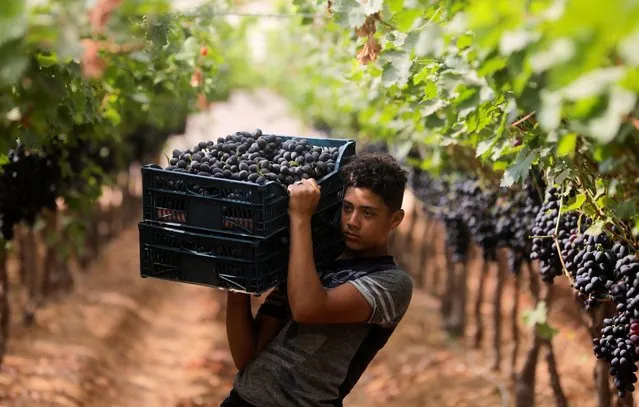
A boy carries harvested grapes at a farm in the El-Menoufia governorate, north of Cairo, Egypt, June 16, 2022. (Photo by Mohamed Abd El Ghany/Reuters)
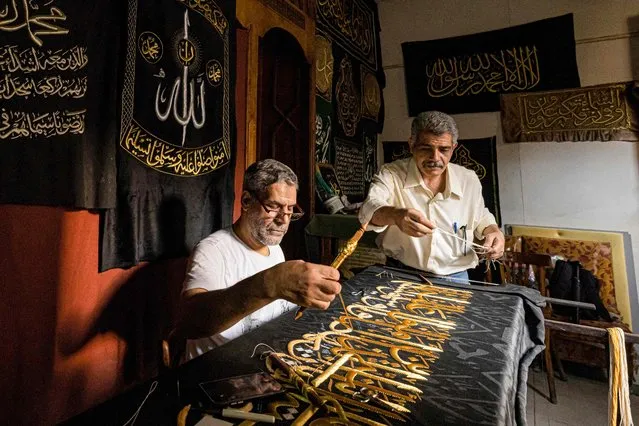
Egyptian embroiderer Ahmed Othman el-Kassabgy (R), whose family was traditionally responsible for used to be honoured with the task of producing the Kiswa, the cloth used to cover the Kaaba at the Grand Mosque in the Muslim holy city of Mecca, supervises as another employee (L) sews with gold thread a verse from the Holy Koran, Islam's holy book, onto a replica drape to be sold as a souvenir for tourists visiting the historic district of al-Hussein of Islamic Cairo in Egypt's capital on June 15, 2022. From the 13th century, Egyptian artisans made the giant cloth in sections, which authorities transported to Mecca with great ceremony. Celebrations would mark processions through cities, flanked by guards and clergymen as Egyptians sprinkled rosewater from balconies above. From 1927, manufacturing began to move to Mecca in the nascent Kingdom of Saudi Arabia, which would fully take over production of the kiswa in 1962. (Photo by Khaled Desouki/AFP Photo)
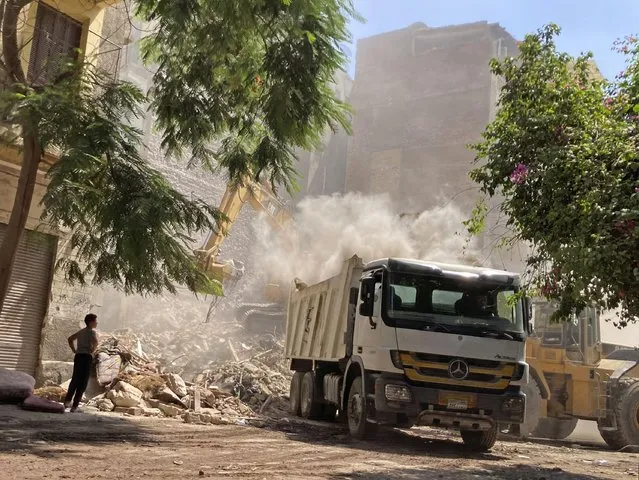
Residents and rescue workers sift through the rubble of a collapsed building in El-Weili neighborhood, Cairo, Egypt, Friday, June 17, 2022. A five-story apartment building collapsed in the Egyptian capital early Friday, killing numerous people according to officials. (Photo by Ahmed Hatem/AP Photo)
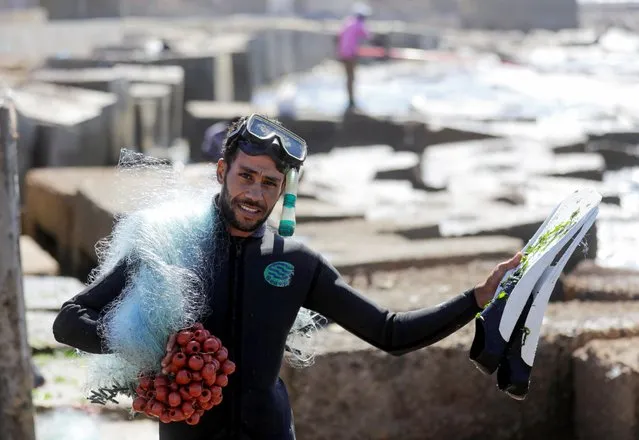
A fisherman who fishes by diving with net, gets ready for fishing in Alexandria, Egypt, June 20, 2022. (Photo by Mohamed Abd El Ghany/Reuters)
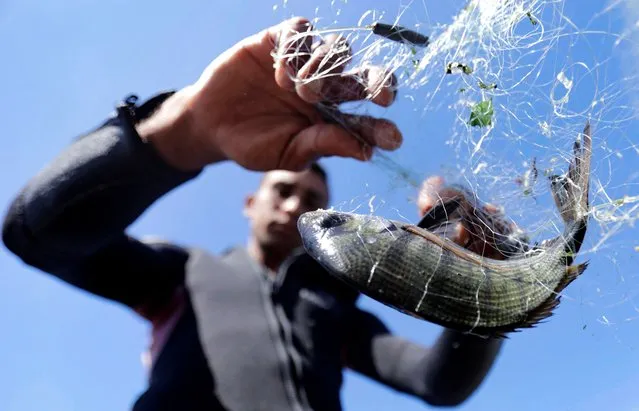
A fisherman who fishes by diving with net, checks his net after fishing, in Alexandria, Egypt, June 20, 2022. (Photo by Mohamed Abd El Ghany/Reuters)
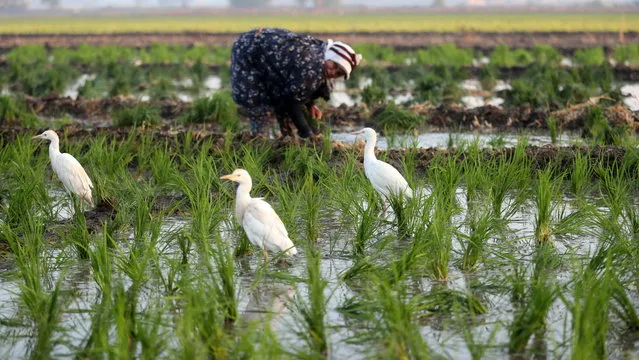
Egrets stand on a field as an Egyptian farmer plants rice seedling in Egypt's fertile Delta in Tanta, Algharbeya governorate, 100 km from Cairo, Egypt, 22 June 2022. Egyptian Government reduced the planting of some crops that need a massive amount of irrigation water, while the government said it will reduce the rice agriculture area in Egypt, amid fear the Renaissance Dam project in Ethiopia could affect the amount of River Nile water reaching Egypt. (Photo by Khaled Elfiqi/EPA/EFE)
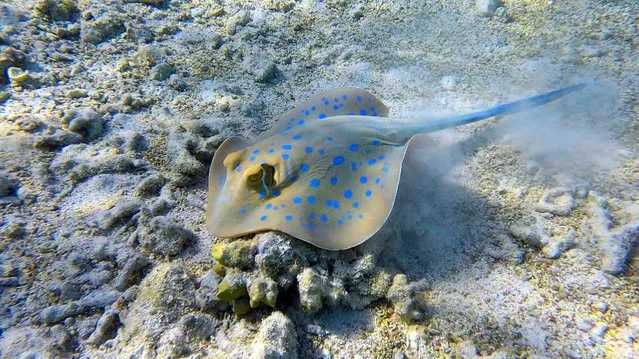
Blue-spotted Stingray (Taeniura lymma) actively digs sandy bottom in search of food in Red sea, Egypt on June 25, 2022. (Photo by Andrey Nekrasov/ZUMA Press Wire/Rex Features/Shutterstock)
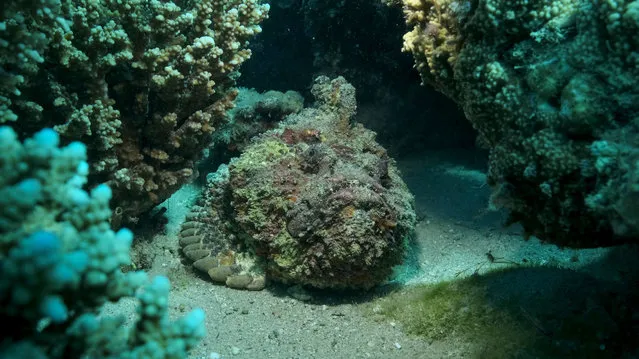
Close-up of the Reef Stonefish (Synanceia verrucosa) on coral reef in Red sea, Egypt on June 26, 2022. (Photo by Andrey Nekrasov/ZUMA Press Wire/Rex Features/Shutterstock)
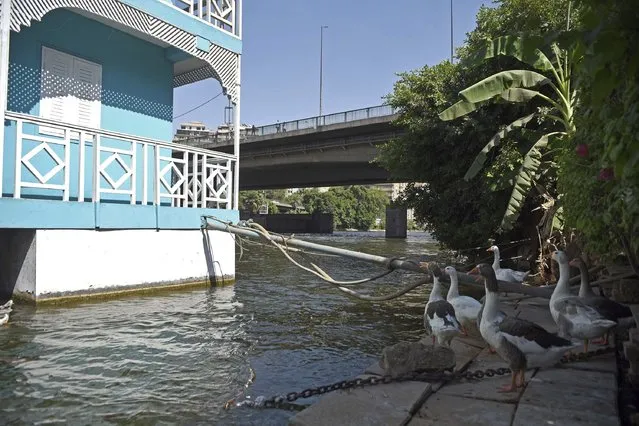
Geese raised by Ikhlas Helmy stand next to her houseboat in Cairo, Egypt on June 27, 2022. A government push to remove the string of houseboats from Cairo’s Nile banks has dwindled their numbers from a several dozen to just a handful. Helmy stands to evicted, and the boat moved or demolished. The tradition of living on the Nile River dates back to the 1800s, and the removal of the boats has drawn criticism in Egypt. The government says it plans to develop the waterfront. (Photo by Tarek Wagih/AP Photo)
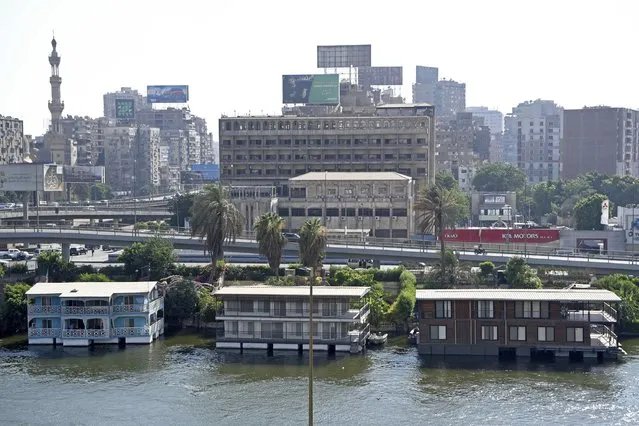
Several houseboats stand moored on the banks of the Nile River in Cairo, Egypt on June 27, 2022. (Photo by Tarek Wagih/AP Photo)
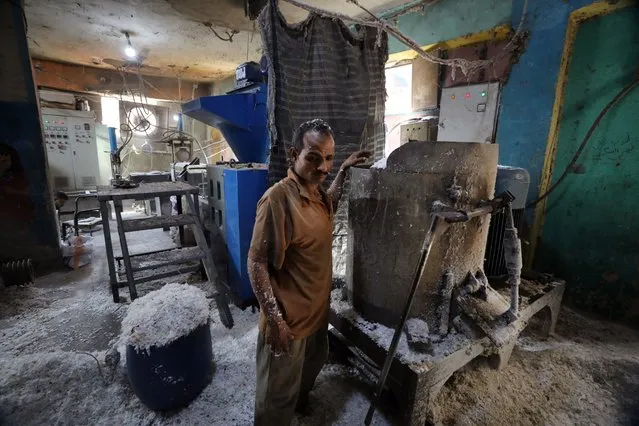
Recycling workers manufacture plastic in the area of Manchiyet Nasser, in Mokattem, Cairo, Egypt, 14 June 2022 (issued 20 July 2022). According to leaders of the Zabbaleen community in Mokattem, five thousand tons of garbage are collected everyday by the Zabbaleen (garbage collectors) living and working in the area of Manchiyet Nasser. They estimate up to 85 percent of the garbage collected are being recycled. The neighborhood of Manchiyet Nasser has nearly 5,000 workshops recycling plastic, aluminum and cardboards. The organic garbage is used to feed the pigs and the other animals owned by the families of the area. About ten percent of the garbage cannot be recycled and is collected by the Association of Garbage Collectors for Community Development. (Photo by Khaled Elfiqi/EPA/EFE)
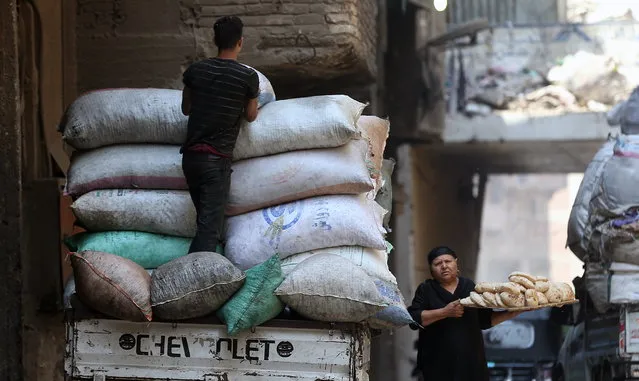
A woman walks past workers transporting wastes for recycling in the area of Manchiyet Nasser, in Mokattem, Cairo, Egypt, 14 June 2022. (Photo by Khaled Elfiqi/EPA/EFE)
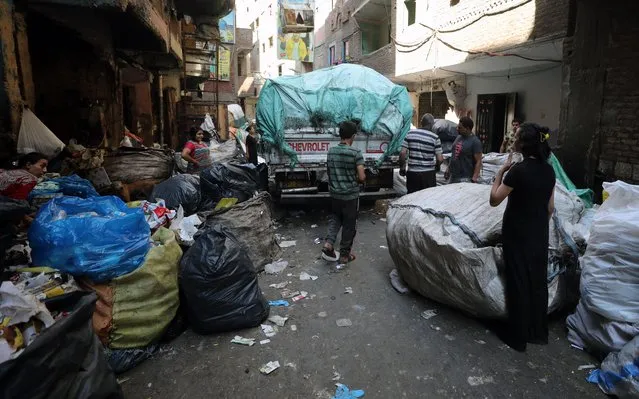
People pick up waste material for recyclables that can be re-sold in the area of Manchiyet Nasser, Mokattem, Cairo, Egypt, 27 June 2022. (Photo by Khaled Elfiqi/EPA/EFE)
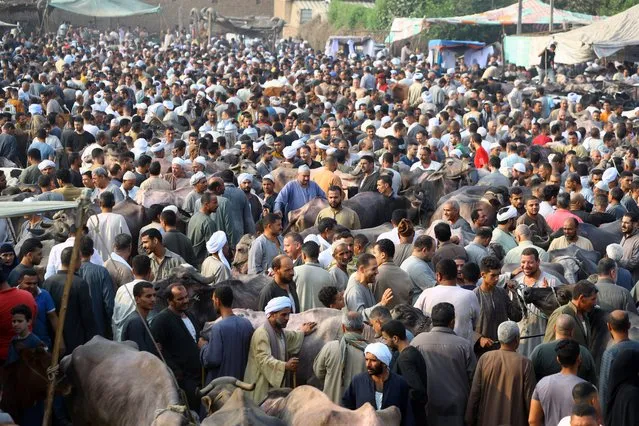
People purchase sacrificial animals ahead of Eid al-Adha at a market in Embama district, Giza, Egypt, 30 June 2022. Eid al-Adha is one of the holiest Muslims holidays of the year. It marks the yearly Muslim pilgrimage, known as Hajj, to visit Mecca. During Eid al-Adha Muslims will slaughter an animal and split the meat into three parts; one for family, one for friends and relatives, and one for the poor and needy. (Photo by EPA/EFE/Stringer)
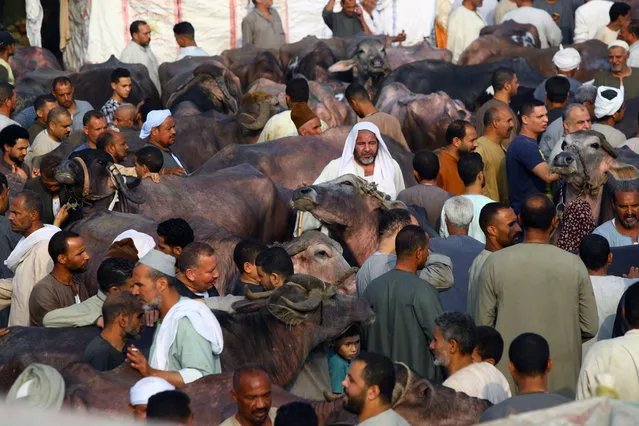
People purchase sacrificial animals ahead of Eid al-Adha at a market in Embama district, Giza, Egypt, 30 June 2022. (Photo by EPA/EFE/Stringer)
23 Jul 2022 04:52:00,
post received
0 comments
